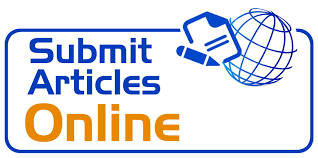E-Readiness Assesment dalam Menilai Tingkat Kesiapan Penggunaan Teknologi Informasi di Lingkungan Kementerian Agama Provinsi Jawa Barat
DOI:
https://doi.org/10.15575/jbpd.v4i1.43850Abstract
The purpose of this research is to determine the level of readiness or readiness of human resources and the community as users / Users of the West Java Provincial Religious Affairs Office services towards the use of IT and what is needed to improve and develop the existing level of readiness. These efforts can pave the way to integrate services that were previously separate into a one-stop service that is easily accessible to the public with just one account. This research uses the Mixed Method Research (MMR) MMR is a research method that brings together two research approaches in one study, namely qualitative research and quantitative research. E-readiness or readiness of officers in operating this online-based KUA service is mostly quite ready. Judging from the facilities and infrastructure such as computers, printers, and IT devices, however, there needs to be more attention to KUAs in rural environments that are often constrained by networks. In addition, there is a need for feature improvements to be made in a short period of time. Most of the KUAs already have adequate facilities and infrastructure. Meanwhile, in terms of the community, people tend to prefer to visit the office directly rather than having to register online. This is because there are still many people who do not know about the existence of online-based applications at the KUA and people who are not too technologically literate. So there needs to be an increase in socialization efforts made to the community.References
A. Alghamdi, I., Goodwin, R., & Rampersad, G. (2011). E-Government Readiness Assessment For Government Organizations In Developing Countries. Computer And Information Science, 4(3), 3–17. Https://Doi.Org/10.5539/Cis.V4n3p3
Anttiroiko, A.-V. (2008). Electronic Government: Concepts, Methodologies, Tools, And Applications: Concepts, Methodologies, Tools, And Applications (Vol. 3). IGI Global.
Creswell, J. W. (2016). Research Design : Pendekatan Kualitatif, Kuantitatif, Dan Campuran (4th Ed.). Pustaka Pelajar.
Firto, N., Lukito Edi, N., & Selo. (2017). Pengukuran E-Readiness Provinsi Gorontalo Dalam Penerapan Smart Government. Prosiding Seminar Nasional GEOTIK, 176–187.
Hapsari, R. L. (2016). Sistem Informasi Manajemen Berbasis Teknologi Informasi Di Kantor Urusan Agama Kecamatan Seyegan Kabupaten Sleman. Adinegara Universitas Negeri Jogyakarta. Http://Journal.Student.Uny.Ac.Id/Ojs/Index.Php/Adinegara/Article/View/3859
Heeks, R. (2005). Implementing And Managing Egovernment: An International Text. Sage.
Kementerian Pemberdayaan Aparatur Negara Dan Reformasi Birokrasi. (2019). Kebijakan SPBE Tingkatkan Keterpaduan Dan Efisiensi Instansi Pemerintah.
Muqhita, D., & Handayaningsih, S. (2013). E-Readiness Pembuatan Model Sistem M-Government (Studi Kasus Pemerintah Kota Yogyakarta). Jurnal Sarjana Teknik Informatika, 1(2), 465–475.
Oetomo, B. S. D. (2016). Kesiapan Pemerintah Dalam Mengembangkan Sistem E-Government. Jurnal Eksplorasi Karya Sistem Informasi Dan Sains, 9(2).
Publcadministration.Un.Org. (2020). UN E-Government Survey 2020. Https://Publicadministration.Un.Org/Egovkb/En-Us/Reports/UN-E-Government-Survey-2020
Sarika Afrizal, Nashrul Hakiem, D. I. S. (2015). Analisis Kesiapan Implementasi E-Government Pada Direktorat Jendral Penyelenggaraan Haji Dan Umrah Kementerian Agama Republik Indonesia. Jurnal Sistem Informasi, 11(2), 88–92. Https://Doi.Org/Https://Doi.Org/10.21609/Jsi.V11i2.429
Schumacher, B. . (1967). Computer Dynamics In Public Administration. Spartan Books.
Susanto, A. (2017). Analisis Citizen E-Readiness Dalam Pengembangan Desa Berbasis Teknologi Informasi.
Viscusi, G., Batini, C., & Mecella, M. (2010). Ereadiness Assessment. In Information Systems For Egovernment (Pp. 99–125). Spring
Downloads
Published
Issue
Section
License
Authors who publish with this journal agree to the following terms:
- Authors retain copyright and grant the journal right of first publication with the work simultaneously licensed under a Creative Commons Attribution-ShareAlike 4.0 International License that allows others to share the work with an acknowledgement of the work's authorship and initial publication in this journal.
- Authors are able to enter into separate, additional contractual arrangements for the non-exclusive distribution of the journal's published version of the work (e.g., post it to an institutional repository or publish it in a book), with an acknowledgement of its initial publication in this journal.
- Authors are permitted and encouraged to post their work online (e.g., in institutional repositories or on their website) prior to and during the submission process, as it can lead to productive exchanges, as well as earlier and greater citation of published work (See The Effect of Open Access).














